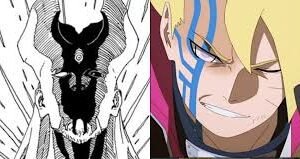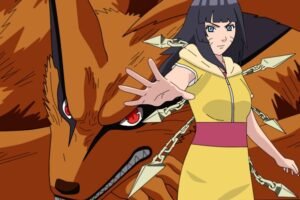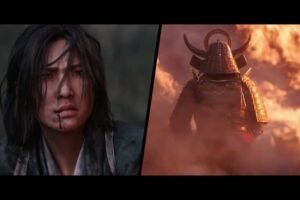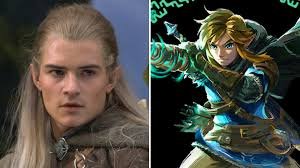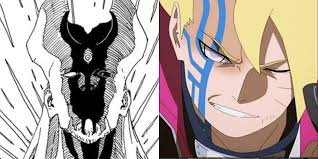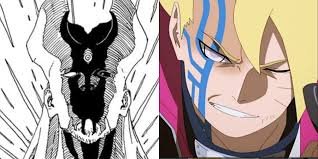
Introduction to Boruto and Kawaki
Boruto Uzumaki and Kawaki are central characters in the “Boruto: Naruto Next Generations” series, both standing as critical figures within the narrative’s complex web of relationships and conflicts. Boruto, the son of Naruto Uzumaki, the Seventh Hokage, carries a significant legacy that influences his journey and motivations. Raised in the bustling village of Konohagakure, Boruto is exposed to esteemed ninja training and a highly talented pool of peers and mentors. This environment fosters his rapid growth and proficiency in various ninja arts.
Conversely, Kawaki’s background is starkly different, embedded in a history of struggle and trauma. From a young age, Kawaki was ensnared by the secretive and malevolent organization Kara, which used him as a vessel for their experiments. His life, marred by manipulation and combat training, was starkly contrasting to Boruto’s supportive environment. Despite these adversities, Kawaki emerged with formidable skills and a stoic determination, attributes that set him as a formidable rival to Boruto.
The emerging rivalry between Boruto and Kawaki becomes a defining element of the series, characterized by their distinct yet intertwined destinies. This competition is not merely a clash of skills but a symbolic struggle forged by their diverse upbringings. Boruto, with access to traditional ninja techniques and experimental scientific tools, often finds innovative ways to overcome challenges. Meanwhile, Kawaki’s raw power and tenacity, amplified by his own Otsutsuki Implant, present him as a salient threat and concurrently a close ally to Boruto. Their dynamic reflects a broader thematic exploration of legacy, resilience, and the future of the ninja world.
As both characters navigate through their paths, the distinctions in their abilities and methods highlight an intriguing juxtaposition. Boruto’s ability to adopt and master a multitude of ninja styles is underpinned by his inherent will to protect those he loves and to fulfill his destiny, which often casts shadows on Kawaki’s similarly potent yet differently motivated prowess. Their evolving rivalry promises to lead to key transformations, not just in their individual arcs but also in the broader saga of “Boruto: Naruto Next Generations.”
The Otsutsuki Legacy: What It Means for Boruto Ninja Style
Boruto Uzumaki is not just another young ninja in the shinobi world; he carries within him an extraordinary heritage that significantly shapes his capabilities. This heritage stems from the Otsutsuki clan, a powerful and ancient lineage with deep ties to the roots of chakra and ninjutsu. The influence of the Otsutsuki clan in Boruto’s bloodline equips him with unique abilities that facilitate his rapid mastery of various ninja styles.
The Otsutsuki clan, known for their god-like powers, has produced several prominent figures whose abilities transcend conventional ninja techniques. Boruto, as a direct descendant through his mother Hinata Hyuga and grandmother Kaguya Otsutsuki, inherits a potent mixture of chakra and innate skills. This lineage endows him with advanced ocular powers like the Jougan, alongside a robust chakra reserve, both of which play crucial roles in his learning curve.
One substantial advantage of Boruto’s Otsutsuki bloodline is his access to the Jougan—a unique dojutsu that grants him enhanced perceptive abilities. The Jougan allows Boruto to detect and respond to threats that conventional ninjas might miss, thus sharpening his combat reflexes and tactical decisions. Furthermore, his Otsutsuki heritage includes an exceptional chakra affinity, enabling him to adapt and master a diverse range of jutsu more efficiently than his peers.
In comparison, Kawaki, despite his formidable skills and training under the fierce tutelage of Jigen, lacks the innate advantages provided by an Otsutsuki heritage. While Kawaki compensates through sheer grit and his implanted technology, there are inherent limitations to his growth prospects that Boruto doesn’t face. Kawaki’s abilities, though formidable, often require external enhancements or sustained training, whereas Boruto’s progress is naturally accelerated by his bloodline.
The contrast between Boruto and Kawaki underscores the significance of the Otsutsuki legacy. Boruto’s ability to integrate and excel in multiple ninja arts isn’t just a testament to his personal effort but also the profound impact of his ancestral lineage. This intrinsic power boosts his potential to unprecedented heights, setting him on a path not just to rival, but potentially surpass, his contemporaries.
Boruto’s Training and Mentorship
Boruto Uzumaki’s rapid advancement in mastering numerous ninja styles is significantly influenced by his rigorous training regimen and the mentorship he receives from some of the most skilled ninjas in the world. At the forefront of these influences are his father, Naruto Uzumaki, the Seventh Hokage, and Sasuke Uchiha, one of the most proficient ninjas adorned with the Rinnegan and Sharingan.
Starting with Naruto, Boruto’s foundational training is rooted in the skills and values imparted by his father. Naruto ensures that his son receives a well-rounded education in the fundamentals of ninja techniques, chakra control, and combat strategies. As the Jinchuriki of Kurama and a prodigious ninja himself, Naruto is well-equipped to guide Boruto through the basics and more advanced aspects of ninjutsu. This training initially helps Boruto develop a strong skill set, significant chakra reserves, and a deep understanding of ninja ethics and responsibilities.
Sasuke Uchiha, on the other hand, provides Boruto with a different perspective and an array of elite skills. As someone who has faced numerous powerful adversaries and honed his abilities to a near-superhuman level, Sasuke’s mentorship focuses on advanced combat techniques, strategic planning, and the nuances of adaptability in battle. Sasuke’s tutorship emphasizes not just the physicality of combat but also the intellectual strategies that often dictate the outcome of high-stakes battles. This comprehensive training from Sasuke helps Boruto leverage his innate potential, pushing his skills beyond conventional limits.
The combination of Naruto’s nurturing yet rigorous approach and Sasuke’s strategic and advanced tutelage results in a highly versatile and skilled Boruto. This multi-faceted training regime enables Boruto to learn and master many ninja styles, integrating diverse techniques and forms into his combat repertoire. Through the mentorship of these two formidable ninja figures, Boruto is well-positioned to potentially surpass his peers, including Kawaki, by building a unique and powerful skill set bolstered by the wisdom and experiences of his mentors.
The Impact of the Karma Seal
The Karma seal has played a pivotal role in Boruto’s development as a ninja, significantly influencing his capacity to learn and adapt to various ninja styles. The Karma seal is a symbol of an Otsutsuki’s power and legacy, acting as both a boon and a curse. It was originally placed on Boruto during the climactic battle with Momoshiki Otsutsuki, who sought to use it as a contingency for his own resurrection. Similarly, Kawaki received his Karma seal from Jigen, a vessel of the Otsutsuki clan.
This enigmatic mark grants Boruto abilities beyond the scope of ordinary ninja training. With it, Boruto can access a vast reservoir of knowledge and techniques that would otherwise take years of rigorous practice to master. The seal essentially serves as a direct conduit to the Otsutsuki’s battle experience, allowing Boruto to employ ninjutsu, taijutsu, and other combat forms with exceptional proficiency.
One notable advantage of the Karma seal is its ability to absorb and dissipate chakra-based attacks. This defensive capability offers Boruto a strategic edge in battle scenarios, where he can neutralize enemy jutsu and redirect the energy to counterattack. Moreover, the seal enhances his physical attributes, providing greater strength, speed, and resilience.
Furthermore, the Karma seal enables Boruto to enter a state of heightened synchronicity with Otsutsuki techniques, making the learning curve for new jutsu significantly flatter. This advantage is critical in Boruto’s pursuit to surpass Kawaki. While both characters share the power of the Karma seal, Boruto’s inherent aptitude and learning agility allow him to unlock unique and advanced techniques faster.
This transformative power of the Karma seal is not without its challenges. The seal’s influence often brings risk and unpredictability, as it threatens to consume Boruto’s individuality. Nevertheless, the benefits provided by this mystical mark position him favorably in his journey to mastering diverse ninja styles and ultimately surpassing Kawaki.
Adaptability and Innovation in Boruto’s Fighting Style
Boruto Uzumaki’s remarkable adaptability and innovative approach to fighting styles can be largely attributed to his unique blend of inherent talents and Otsutsuki lineage. Unlike many of his peers, Boruto demonstrates an exceptional capacity to learn and integrate new jutsus and techniques swiftly, an attribute that places him in a league of his own. This intrinsic ability allows him to adopt various fighting styles, amalgamating them into his own repertoire with relative ease and efficiency.
One of the prime examples of Boruto’s adaptability is witnessed in his mastery of the Rasengan. Under the guidance of his mentor Sasuke Uchiha, Boruto not only learned the conventional Rasengan but also innovated upon it. His creation of the Vanishing Rasengan, which expands on the traditional technique by incorporating wind release chakra, embodies his resourcefulness and ingenuity in combat. This variant has proven to be a pivotal asset, catching many adversaries off guard with its unexpected disappearance and subsequent reappearance.
Moreover, Boruto’s affiliation with the Otsutsuki clan imparts him with a significant edge. This lineage grants him a vast reservoir of chakra and access to the powerful Otsutsuki techniques, which he seamlessly integrates with his traditional ninja skills. For instance, his ability to utilize Karma to absorb and manipulate chakra-based attacks from his opponents further exemplifies his tactical versatility. This skill not only neutralizes threats but also allows him to repurpose enemy techniques against them.
In addition, Boruto’s innovative spirit is evident in his use of scientific ninja tools. While initially relying on these external gadgets to supplement his abilities, he quickly learned to incorporate their advantages into his innate skill set. This amalgamation of traditional and technological techniques showcases his willingness to embrace and innovate upon the available resources, optimizing his combat effectiveness.
Ultimately, Boruto’s rapid assimilation of diverse fighting styles and his progressive enhancement of traditional jutsus underline the profound impact of his Otsutsuki heritage. His innate adaptability, coupled with his innovative prowess, positions him as a formidable ninja, capable of surpassing even the most skilled adversaries.
Boruto Uzumaki’s remarkable ability to master multiple elemental releases is a potent testament to his prodigious talent and Otsutsuki lineage. As the son of the Seventh Hokage, Naruto Uzumaki, and Hinata Hyuga, he has inherited significant potential, further augmented by the mysterious powers of the Otsutsuki clan. This combination has enabled Boruto to utilize a variety of elemental jutsu with remarkable proficiency—a skill that sets him apart from many of his peers and rivals, including Kawaki.
One of Boruto’s most notable accomplishments is his mastery of Wind Release, which he exhibited early in his ninja journey. This element is known for its versatility and power, and Boruto has demonstrated its effective application in numerous scenarios. An exemplary instance of his Wind Release proficiency is his “Gale Palm” technique, which allows him to generate powerful gusts of wind capable of considerable destructive force. This technique not only showcases his control but also his ability to adapt and refine basic ninja skills to a higher level of efficiency.
In addition to Wind Release, Boruto has shown an adept command of Lightning Release. His creation of the “Vanishing Rasengan” exemplifies this; integrating lightning nature transformation with his Rasengan technique results in a Rasengan that disappears mid-throw, catching opponents off guard. This blend of ingenuity and elemental mastery underscores Boruto’s exceptional capabilities and strategic acumen in combat situations.
Comparatively, Kawaki, who possesses the ability to utilize Fire Release with significant potency, lags behind Boruto’s diverse elemental repertoire. Although Kawaki’s Fire Release techniques, such as his “Fire Ball Jutsu,” demonstrate his formidable talent, he has not yet showcased the same level of multi-elemental versatility. Boruto’s additional proficiency in Water and Earth Releases further extends his tactical advantage, allowing him to be more versatile in various combat situations.
In summary, Boruto’s ability to adeptly harness multiple elemental releases is intrinsically linked to his Otsutsuki lineage, granting him a substantial edge over Kawaki. This mastery not only enhances Boruto’s combat prowess but also establishes him as a versatile and formidable ninja in the world of Boruto: Naruto Next Generations.
Surpassing Kawaki: Key Battles and Achievements
Boruto Uzumaki’s journey to surpassing Kawaki is marked by several critical battles and achievements that have underscored his growing superiority. One of the pivotal moments in this narrative is the battle at the Valley of the End, where Boruto showcased his advanced strategic thinking and versatility in utilizing various ninja styles. This confrontation not only demonstrated Boruto’s raw power but also his ability to adapt and exploit his environment, a clear indicator of his burgeoning prowess.
Another significant arc is the Chuunin Exam arc, where Boruto’s innovative use of ninjutsu set him apart. Despite a rocky start, Boruto’s quick learning and application of new techniques, such as the vanishing Rasengan, highlighted his ability to incorporate unique elements into traditional ninja practices. This particular move not only surprised his opponents but also earned him the respect and recognition of seasoned shinobi, affirming his capabilities.
The battle against Ao also serves as a testament to Boruto’s superiority over Kawaki. Boruto’s tactical acumen and empathetic approach allowed him to defeat a veteran ninja, showcasing his deep understanding of ninja tactics and his capacity to think several steps ahead. This victory was pivotal in showcasing Boruto’s growth and his ability to handle seasoned adversaries with composure and minimal reliance on brute strength.
In the fight against Isshiki Otsutsuki, Boruto took significant steps in proving his mettle. His strategic usage of karma and the ability to collaborate effectively with allies like Sasuke and Naruto highlighted his growth in team dynamics and strategic warfare. Boruto’s ingenuity and boldness in this high-stakes encounter indicated not only his strength but also his potential to surpass established figures, including Kawaki, in the shinobi hierarchy.
These battles and achievements are substantial within the narrative, illustrating Boruto’s rapid progression and the underlying advantage provided by his Otsutsuki lineage. Each milestone reinforces Boruto’s superior capabilities, painting a clear picture of his path to surpassing Kawaki and cementing his place as a formidable ninja in his own right.
The Future of Boruto and the Otsutsuki Influence
Boruto Uzumaki’s journey within the Naruto universe has been significantly shaped by his Otsutsuki heritage. This lineage is more than a mere plot device; it imbues Boruto with unparalleled potential, paving the way for his future development. As Boruto continues to tap into the dormant power of the Otsutsuki, he will likely refine his abilities to unprecedented levels. This unique genetic advantage positions him not only to surpass Kawaki but potentially to exceed the prowess of many other renowned figures in the Naruto franchise.
The Otsutsuki influence is multifaceted, providing Boruto with enhanced resilience, an expansive chakra reserve, and access to otherworldly jutsu. By mastering these abilities, Boruto can diversify his combat techniques, making him a formidable opponent. Such versatility is crucial, allowing him to adapt and excel against a wide range of adversaries. If the series follows this trajectory, fans can anticipate Boruto leveraging these unique powers to tackle increasingly challenging foes, thereby solidifying his status as one of the most powerful ninjas in the Naruto universe.
Furthermore, Boruto’s ongoing struggle with the Otsutsuki within himself adds a layer of complexity to his narrative. As he endeavors to control and harmonize this influence, Boruto’s character growth will likely reflect a deeper understanding of balance and power. This internal conflict not only enhances his abilities but also his wisdom, ultimately enabling him to protect the world from formidable threats.
The integration of the Otsutsuki heritage in Boruto’s storyline ensures that his evolution is both compelling and dynamic. As the series progresses, it is this very heritage that will drive Boruto to surpass not only his contemporary, Kawaki, but also the legendary ninjas who have come before him. With his relentless pursuit of excellence and the intrinsic power of the Otsutsuki, Boruto is destined for greatness, setting the stage for a transformative impact on the Naruto universe.
